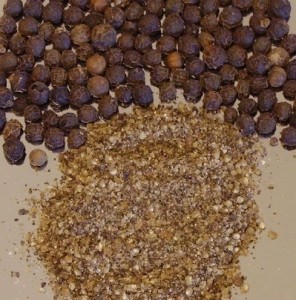In an effort to curb the number of foodborne illness outbreaks in America, the Food and Drug Administration is taking a harder look at packaged spices that are typically found on grocery store shelves.
 FDA has announced it is analyzing a recently completed two-year, nationwide study to collect data on the presence of Salmonella in retail packages.
FDA has announced it is analyzing a recently completed two-year, nationwide study to collect data on the presence of Salmonella in retail packages.
The FDA has introduced new rules, as part of the Food Safety and Modernization Act, to “establish preventative controls in the food supply chain.” Through a “risk profile,” the agency determined the presence of pathogens, such as Salmonella, and filth in spices is “a systemic challenge,” and the problem relates in part to poor or inconsistent use of appropriate controls to prevent contamination. Once full analysis of the study has been completed, the FDA will post the results online.
The draft risk profile released in Oct. 2013 determined that the presence of pathogens, such as Salmonella, and filth in spices is a systemic challenge and that the problem relates in part to poor or inconsistent use of appropriate controls to prevent contamination. Spice shipments from 79 countries were examined for Salmonella, and we found that 37 of the 79 countries had Salmonella-contaminated shipments, indicating that contamination of spice shipments with Salmonella is not limited to just a few source countries. Spice shipments offered for entry into the U.S. had an overall prevalence for Salmonella of approximately 6.6 percent during the 2007 to 2009 fiscal years, about twice the average prevalence of all other imported, FDA-regulated foods. We also found that approximately 12 percent of the spice shipments offered for entry to the U.S. during a three-year period (FY 2007 to FY 2009) were adulterated with filth such as insects and animal hair, which can result from inadequate packing or storage conditions.
However, we noted in the study an important data gap in that we were missing key information about the level of contamination of spices at retail in the U.S. When we began conducting the risk profile, we asked the public for any data but did not receive information about contamination rates at retail. Because many imported spices are treated after entry to the U.S. to reduce contamination before they are sold to consumers, we knew that the 6.6 percent contamination rate found at the import level did not reflect what was actually reaching consumers. We needed retail data to better evaluate the true risk to consumers.
